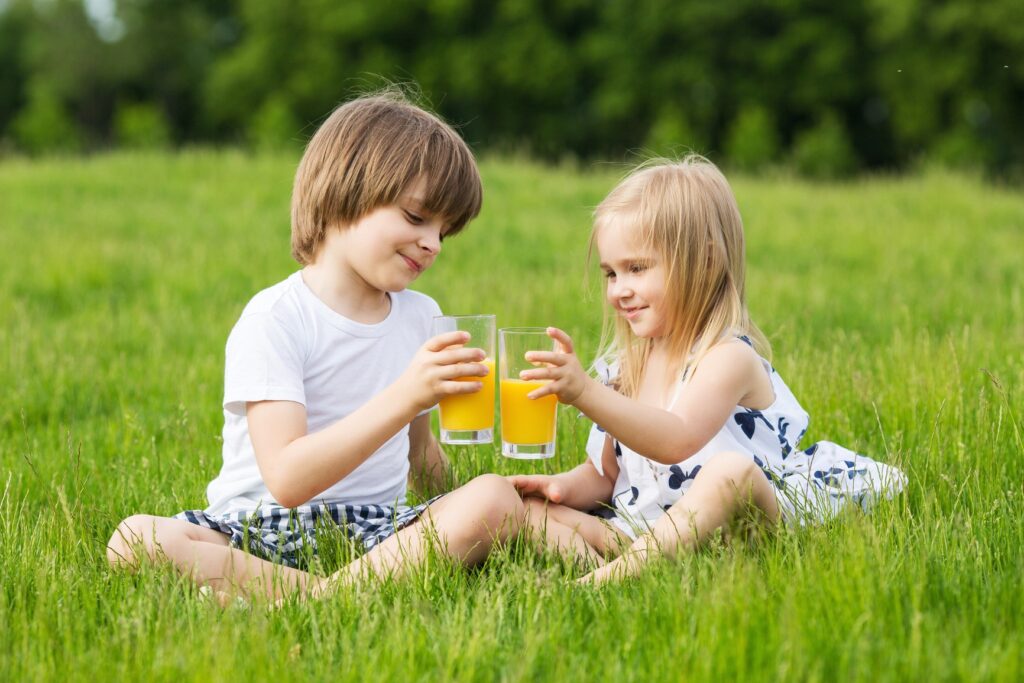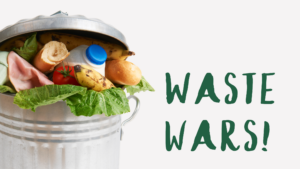The following article was originally published on The Conversation.
Most parents will tell you their kids love juice. It tastes good, often comes in convenient and child-friendly packaging, and seems much healthier than soft drinks, sports drinks or other sweet beverages. It comes from fruit, after all. But we also know it’s high in sugar, and so can contribute to obesity and dental problems.
We asked five experts in nutrition, dietetics, medicine and dentistry whether or not we should let our kids drink juice:
Bec Reynolds is a lecturer in Nutrition at the UNSW:
Juice is ok sometimes, although plain tap water is the best drink for most children. But if you’re giving your child something other than water, and milk isn’t an option; then it’s better to give kids fruit juice instead of drinks that are ‘worse’, such as soft drinks. Even though both fruit juice and soft drinks are acidic and sugary (two bad factors for teeth), and provide calories but not as much fullness as other drinks or foods (bad for body weight regulation); at least fruit juice contains some micronutrients (such as vitamin C) and other plant antioxidants.
What would be even better, though, is to give children juices that comprise all (or mainly) vegetables, such as carrot, celery and apple juice (my personal fave). This is because fewer than one in 100 children consume enough vegetables, which are great provisors of healthy nutrients and don’t have many kilojoules or much sugar.
Even better still is juice that is mostly vegetable juice with pulp (fibre) – but the challenge here is actually getting a child to drink it!
Clare Collins is a Professor in Nutrition and Dietetics at the University of Newcastle:
Keep fruit juice as the exception, not the rule. While the Australian Guide to Health Eating specifies a serve of fruit can be quantified as 125 mLs juice, it recommends whole fruit is primarily eaten, rather than drinking juice. This is because whole fruit is more filling, and better for your teeth.
Fruit juice is low in fibre and so it is easy to drink too much, compared to eating the whole fruit. For example one medium orange contains about 285 kilojoules and four grams of fibre compared to one 250mL juice popper which contains closer to 300-500 kilojoules and less than one gram of fibre, depending on the brand.
Fruit juice is classified as a sugar-sweetened beverage, along with soft drink, sports drink and other sugar sweetened beverages. In intervention studies in children and adolescents that replace sugary drinks with drinks lower in calories, they experience less weight gain.
David Manton is a professor of paediatric dentistry at University of Melbourne:
There are two main problems with fruit juice and teeth – first, the sugar (either from the fruit, or added) feeds bacteria in the plaque on the teeth, that make acid which causes dental decay. Nearly half of Australian six year olds have at least one hole in their teeth, and drinks like fruit juice are part of the cause.
Second, the acid content of many fruit juices can dissolve the hard outer coating of the teeth (the enamel) and once it is dissolved, it can’t grow back.
Research suggests nearly four in five Australian children have signs of erosion in their primary (baby) teeth, and one in four in their permanent teeth. If you decide to let your child drink juice, then having it with a meal is the healthiest for teeth, avoiding drinking between meals.
Kacie Dickinson is an accredited practising dietitian and lecturer in nutrition and dietetics at Flinders University:
Too much sugar in the diet is linked to dental cavities and unhealthy weight gain throughout childhood. Based on this evidence the World Health Organisation recommends limiting foods and drinks containing free sugars, including fruit juice.
Fruit juices are not the same as fresh fruits and it’s better for your child to try to eat fruit rather than drink it. As fibre and other components of fresh fruit are removed from juice, the amount of sugar is more concentrated and therefore higher in fruit juice.
As fruit juices are readily accepted by children (they taste sweet), often conveniently packaged and therefore easy for kids to drink, not letting your kids drink juice can be difficult for parents.
But fruit (and vegetable) juices account for the biggest proportion of free sugar intake from beverages among kids 2-8 years old in Australia. So reducing intake of fruit juice is a good place to start if you want to reduce your child’s sugar intake.
Water is always the best drink for children but if you are stuck with what to offer your child (>12months) instead of juice, offer fresh fruit instead to role model good habits eating whole or fresh foods.
Fruit juice can be kept for special occasions, and offered in small amounts (1/2 cup or less), but it is not an essential part of a healthy diet for kids.
Sandro Demaio is an Australian medical doctor and fellow in global health and NCDs at the University of Copenhagen:
When they’re wrapped in a peel or a skin, fruit sugars are not a health concern. In fact, the sugars in fruit were probably nature’s way of encouraging us to eat the fruit to begin with. Fruits like oranges, apples and pears contain important fibre. This roughage is healthy in many ways.
First it slows our eating down; it’s easy to drink a glass of juice squeezed from seven apples, but much harder to eat those seven pieces whole. Second, it makes us feel full for longer. And third, it slows the release of the sugars from the fruit into our bloodstream, thus allowing our bodies to react and use the energy appropriately, reducing our chances of weight gain and related health challenges.
It’s also great for gut health and associated with a range of other health benefits. Juicing involves the removal of most of that fibre and even the loss of some of the important vitamins.
What we don’t lose, though, are the 21 grams or more than 5 teaspoons of sugar in each glass. In short, you can eat whole fruit with confidence but should avoid juice.




